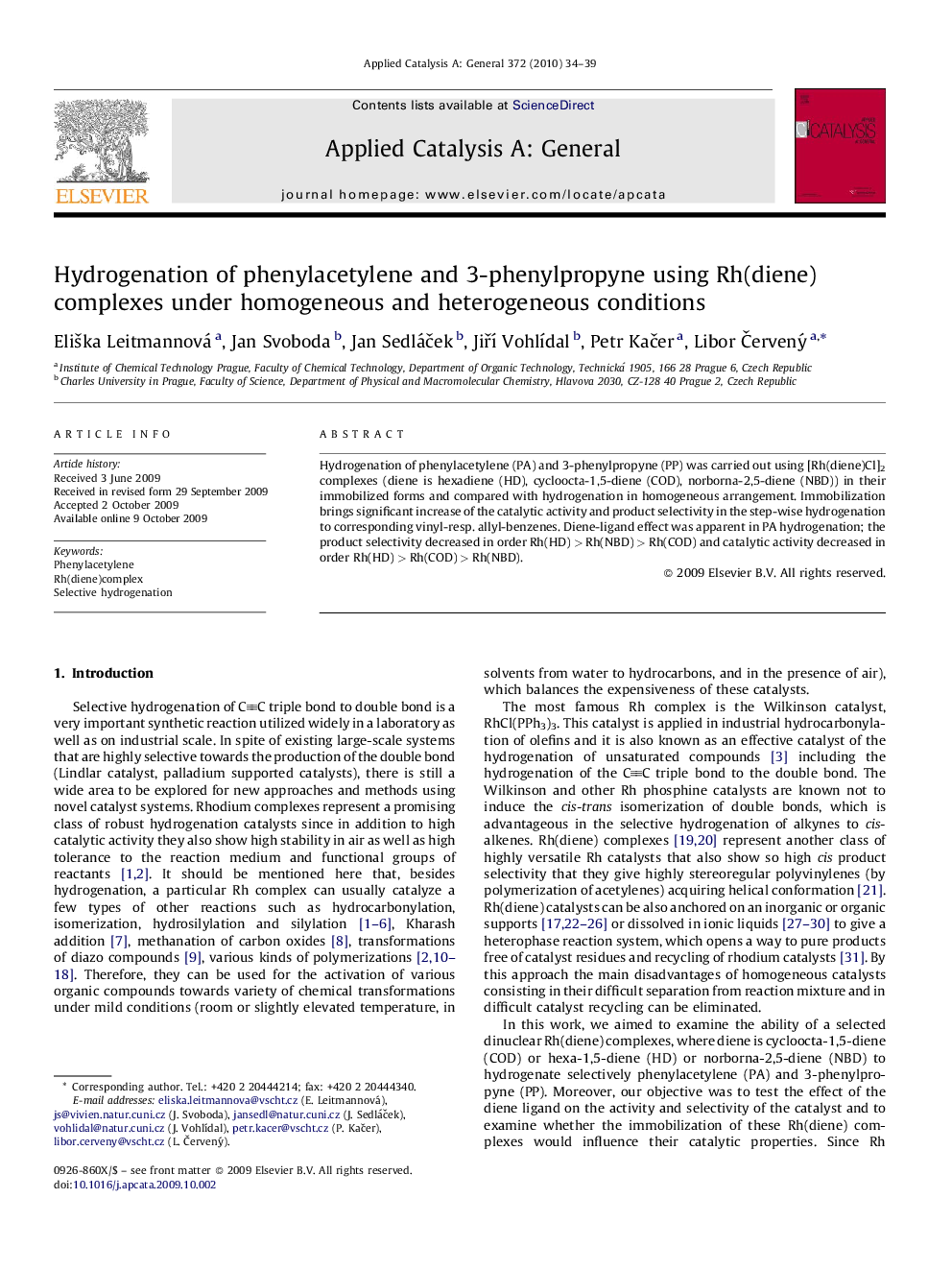| کد مقاله | کد نشریه | سال انتشار | مقاله انگلیسی | نسخه تمام متن |
|---|---|---|---|---|
| 42365 | 45922 | 2010 | 6 صفحه PDF | دانلود رایگان |

Hydrogenation of phenylacetylene (PA) and 3-phenylpropyne (PP) was carried out using [Rh(diene)Cl]2 complexes (diene is hexadiene (HD), cycloocta-1,5-diene (COD), norborna-2,5-diene (NBD)) in their immobilized forms and compared with hydrogenation in homogeneous arrangement. Immobilization brings significant increase of the catalytic activity and product selectivity in the step-wise hydrogenation to corresponding vinyl-resp. allyl-benzenes. Diene-ligand effect was apparent in PA hydrogenation; the product selectivity decreased in order Rh(HD) > Rh(NBD) > Rh(COD) and catalytic activity decreased in order Rh(HD) > Rh(COD) > Rh(NBD).
Phenylacetylene and 3-phenylpropyne were hydrogenated using [Rh(diene)Cl]2 complexes in their immobilized forms and compared with hydrogenation in homogeneous arrangement.Figure optionsDownload high-quality image (58 K)Download as PowerPoint slide
Journal: Applied Catalysis A: General - Volume 372, Issue 1, 5 January 2010, Pages 34–39